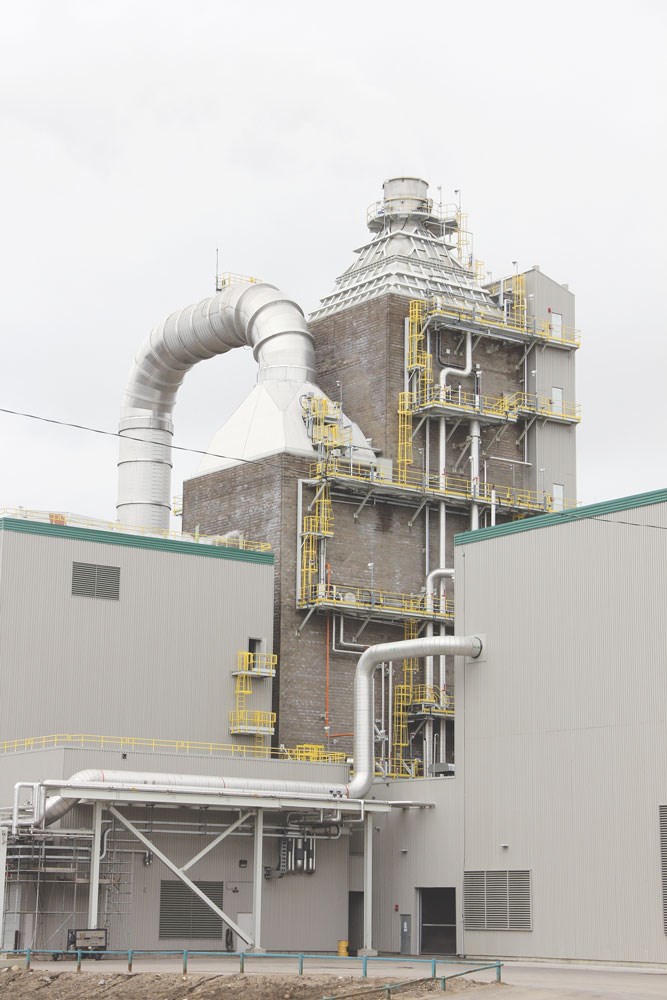The carbon capture and storage (CCS) facility at SaskPower’s Boundary Dam (BD) Power Station had another good year in 2019, according to data released by SaskPower on Thursday.
The facility prevented more than 616,000 tonnes of carbon dioxide (CO2) from entering the earth’s atmosphere, even though there was a scheduled shutdown that lasted about two months.
There was also scheduled maintenance in the second half of November and the first week of December that took the facility offline.
It was also a year of milestones and firsts for CCS.
The CCS facility eclipsed the three million tonne mark for CO2 captured and sequestered on Nov. 4. It took a little more than five years to hit that mark.
The CCS facility also hasn’t had a lost-time accident since it came online in October 2014.
“You see the size and the scope and the equipment and the chemicals that we’re handling and all those sorts of things, and 24 hour a day operation, 365 days a year, that plant has equipment running in in,” said Howard Matthews, the vice-president of power production at SaskPower.
The massive compressor inside the CCS facility also went through its first overhaul and inspection last spring. Matthews described it as a 20,000-horsepower piece of equipment that has precision parts, making it difficult work to complete.
“It was due for its regularly scheduled five-year dismantle and inspection, and a 57-day outage to allow us to take that compressor (apart),” said Matthews.
It has been running well since it came back online in May.
While he would always like to see the CCS facility capture more CO2, Matthews was pleased with the amount of carbon dioxide that was captured.
There have been some challenges. The boiler in Unit 3 has encountered tube leaks, because Matthews said the fuel they burn wears the tubes out. One of those tube leaks occurred last week.
“After five years of hard run time on the BD 3 boiler, we’ve seen a couple of tube leaks. Of course, when the boiler’s not operating, there’s no flue gas and no steam for the CCS facility and it takes CCS offline,” said Matthews.
There will be some scheduled maintenance at Boundary Dam this year. They won’t be to the same degree as the two-month shutdown of a year ago, but there will be regularly scheduled maintenance for cleaning work in the tower, absorber and heat exchangers.
Nothing unusual is slated, which means there should be very good performance in 2020, Matthews said.
“It does take a bit of time when you come offline,” said Matthews. “Things cool down and you have to get the chemical back into spec and the temperatures back correct, and then go back online with the compressors.”
He believes there has been some really good progress on the facility over the past five years. SaskPower’s game plan when it embarked on the CCS facility was, first and foremost, to prove the technology and to show it would work as intended. Matthews believes they have done that.
They also wanted to improve reliability.
“We’ve seen substantial improvement in reliability with some of the work that we’ve done in the past couple of years,” said Matthews.
Now their focus is surrounding cost reduction, and trying to get their costs for CCS as low as possible.
“The whole point of this is with reliability and cost improvements, to give the best information that we can to the decision-makers going forward. Those decisions won’t be made for some time. We continue to work on reliability and reducing our costs,” said Matthews.
The December report for the CCS facility, released last week, shows that it captured 57,590 tonnes of CO2. The average daily capture rate in December was 2,504 tonnes per day, with a peak one-day capture rate of 2,863 tonnes.
The acid plant also returned to service in late December and produced 104 tonnes of sulfuric acid.
The CCS facility was online 72 per cent of the time in December, compared with an average of 70 per cent for the previous 12 months.
Unit 3 at Boundary Dam produced an average of about 110 megawatts of power during the month, compared to a previous 12-month rate of 101.3 megawatts.
Since the CCS facility came online in October 2014, it has captured 3,081,452 tonnes of CO2.




